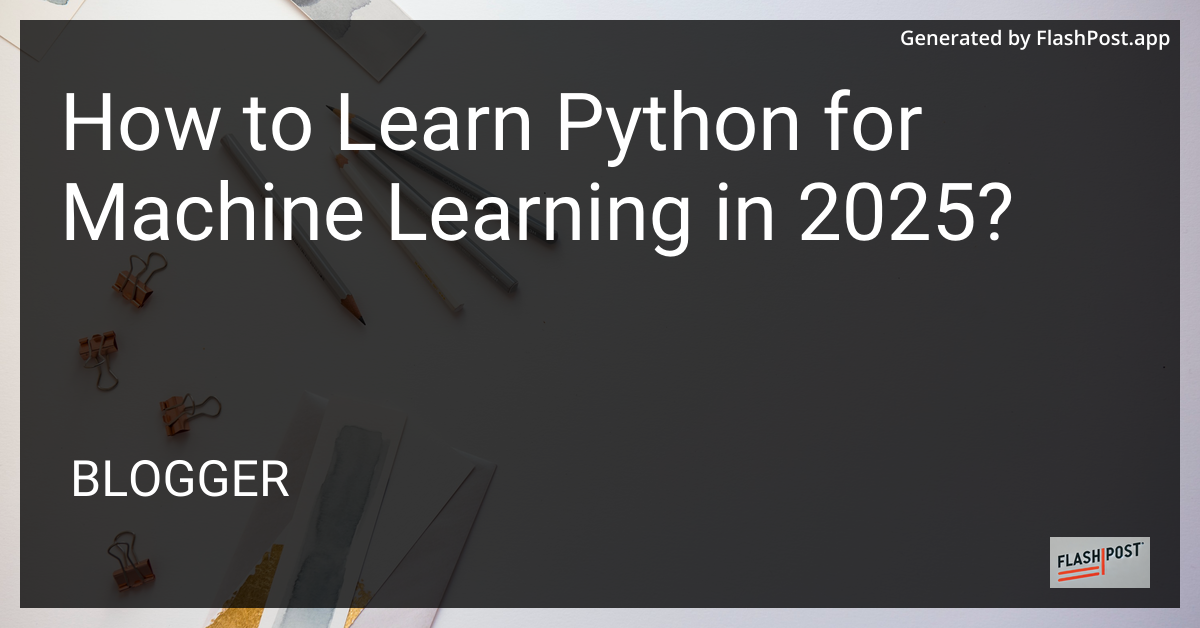How to Learn Python for Machine Learning in 2025?

How to Learn Python for Machine Learning in 2025
In the rapidly advancing field of machine learning, Python remains the go-to language for many developers in 2025. Python’s simplicity, readability, and flexibility make it an ideal choice for both beginners and seasoned professionals who aim to build a career in machine learning. This guide provides a structured approach to mastering Python for machine learning, tailored for today’s learners.
Why Choose Python for Machine Learning?
- Versatility: Python’s ability to integrate with other languages and platforms makes it highly versatile.
- Extensive Libraries: Libraries like TensorFlow, PyTorch, scikit-learn, and Pandas simplify complex mathematical computations.
- Community Support: A large community means more resources, tutorials, and support.
Steps to Learn Python for Machine Learning
1. Get Comfortable with Python Basics
Before diving into machine learning, ensure you have a solid understanding of Python fundamentals. Start with the basics such as data types, loops, functions, and error handling. Resources like Codecademy or Python.org can be helpful.
2. Understand Data Structures and Algorithms
Machine learning heavily relies on data manipulation. Master data structures (lists, dictionaries, sets), and become familiar with algorithms. Understanding these concepts is critical for implementing machine learning algorithms efficiently.
3. Familiarize Yourself with Key Libraries
Focus on mastering libraries that are essential for machine learning:
- NumPy: Understand how to use NumPy for numerical computations.
- Pandas: Learn data manipulation with Pandas’ powerful data structures.
- Matplotlib and Seaborn: Utilize these for data visualization, a critical part of any machine learning project.
4. Dive into Machine Learning Concepts
Start exploring machine learning concepts:
- Supervised vs. Unsupervised Learning: Know the difference and common algorithms used in each.
- Neural Networks and Deep Learning: Familiarize yourself with basic concepts and architectures.
5. Practice with Projects
Apply your knowledge through projects. Kaggle is an excellent platform to find datasets and participate in competitions. Creating projects like a spam filter, sentiment analysis, or image recognition system will enhance your practical skills.
6. Learn Version Control Systems
Familiarize yourself with version control systems like Git. Efficiently managing your code is a crucial skill in any software development job.
7. Stay Updated and Engage with the Community
With Python constantly evolving, staying updated is essential. Follow blogs, contribute to forums like Stack Overflow, and engage with the community. Consider reading about how to define an inequality in Python, which can be beneficial for handling mathematical operations.
8. Experiment with Python for GUI and Event Handling
Expand your horizons by learning how to integrate Python with GUI elements and event handling. Explore resources like wxPython event handling and Python GUI shortcuts for more advanced Python applications.
Conclusion
Learning Python for machine learning in 2025 involves a blend of mastering the language’s basics, understanding machine learning principles, and continuous learning. By following this guide and leveraging community resources, you’ll be well on your way to becoming proficient in Python for machine learning, setting a strong foundation for a career in artificial intelligence and data science. “`
This markdown article provides a structured approach to mastering Python for machine learning while optimizing SEO with relevant keywords and useful links for further exploration.
Comments
Post a Comment